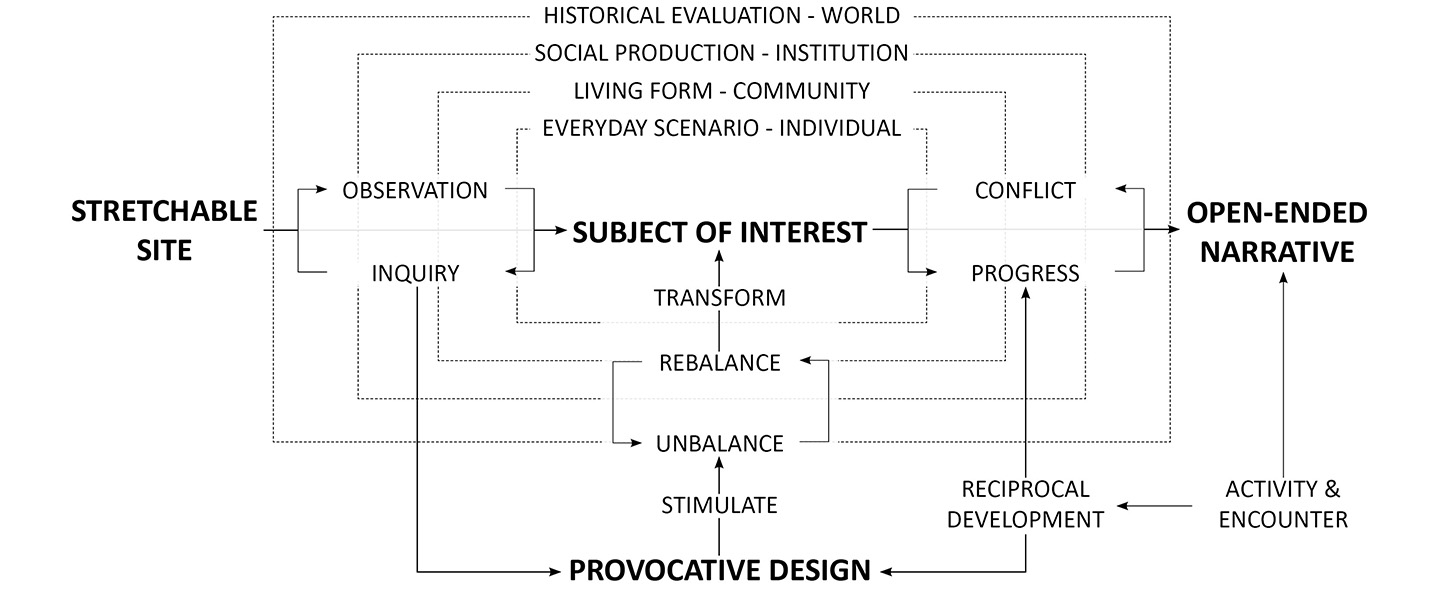About
COVIDPUNK is an open-ended experiment of architectural fiction built upon the shared cultural pursuit
of social imagination between architectural discourse and SF (science fiction). It emerges from my interests
in the drastic social quakes brought by COVID-19 and the simultaneous revelation of environmental changes
after decades of underlaying developments. Although architects and SF communities have both been producing
alternative futures on these topics by imposing hypothetical stimuli (design concepts and SF novums) on humanity’s
status quo, the affirmativeness of design and the cultural provocation of SF world-building deliver nearly opposite
qualities of imagination and narratives, for which the ideas of ‘SF becomes reality’ and ‘architecture has to
change’ inevitably merge at post-2020 images of human conditions.
The project aims to incorporate architectural imagination and SF into an interactive narrative of a post-2020 world
based on the fears and wonders of contemporary humanity. Instead of heroizing architectural design or fictional
characters for ‘plot twists’, this project focuses on possible scenarios of interactions, counter-actions, conflicts,
and compromises between humans and the ways they live. As a thought & storytelling experiment that aims for general
audiences beyond architectural disciplines, the stories simulate first-person perspectives on speculative scenarios
and represent through panoramic scenes (web-VR) and animations intersected by monologues, dialogues, and digital
interfaces with everything optimized for mobile screen interactions. The visual styles and interactive designs
vary between individual stories as I experiment with new media techniques. I would also like to reposition
architectural design as narrative devices to raise questions that lead to ‘ANOTHER futures’ instead of reconciling
conflicts for ‘THE future’ as most architects would professionally do. The idea to call ‘another’ also wishes for
a more hopeful version to happen in reality.
Haoyu Wang, Architectural Deserter
World-Building Methodology
The conceptual framework outlines three sequential and reciprocal components of world-building on urbanist subjects of
technological advances, social conflicts, and environmental changes. Within each component, the project suggests
alternative approaches by incorporating SF’s advantageous qualities into architectural imagination:
1. Raising critical questions to the changing states of the subject within a holistic image of correlative human conditions;
Stretchable Site strategy: reconceptualize architectural site as a scale-based lamination of time and space centered by the
subject of interest and stretches according to the envisioned storytelling form. A stretchable site allows questions to emerge
in a broader context of the subject’s changing states and project on different scales of the laminated conditions.
2. Introducing hypothetical stimulus through the questions to transform the subject’s changing states;
Provocative Design strategy: a provocative design can function as a narrative device to unbalance and displace the social and
environmental structures for the revelation of the conflicts and continuous developments of alternative conditions in
the subject’s changing states.
3. Building scientific extrapolation upon the transformed subject to generate future narratives;
Open-ended Narrative strategy: apply SF’s story-centric approach to unfold an open-ended narrative of technological, social,
and environmental encounters linked by activities of sensible scenarios and conflictions to the popular imagination.
 Conceptual Diagram
Conceptual Diagram